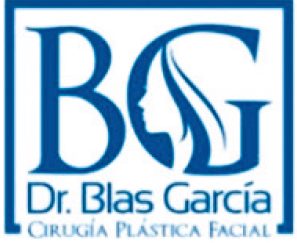Exploring the streets, squares, and nooks of the Historic Centre of San Cristóbal de La Laguna has been a delightful journey. To conclude, let’s delve into one of the city’s unique streets, now named after the Lagunero priest, historian, writer, and Official Chronicler, Mr. José Rodríguez Moure.
There is so much to discover in the charming streets and squares of La Laguna. This trilogy will venture onwards through the pages of Diario de Avisos, allowing imaginary visits to the distinctive buildings of Aguere. Prepare to learn about their architectural features, tales of past inhabitants, and the enduring legends that linger through time.
El Remojo Street once ran alongside the Convent of San Agustín, now home to Instituto Canarias Cabrera Pinto. Previously, water flowed through this area up until its infrastructure transformation in 1750, as noted in the Cabildo archives. The street commences at the intersection with San Agustín and extends to the junction of Silverio Alonso, Cabrera Pinto, and Camino Largo. Along its length, numerous 18th-century buildings, both single and double-storey, have stood the test of time in their grandeur.
At the street’s onset on the right side lies Plaza del Instituto, named as such since 1855, later christened as Guillermo Rancés Square. This honour was bestowed upon Guillermo Rancés, a notable lawyer, politician, and journalist who held key governmental positions. Noteworthy too was his advocacy for the revival of the University of La Laguna. Until Calle Anchieta, all constructions on this side belonged to the Institute. On the left side, several captivating buildings remain. The initial segment of the road, from San Agustín to Anchieta, has recently been transformed into a pedestrian-friendly zone.
A GLIMPSE INTO THE CROSS OF RODRÍGUEZ MOURE
Once upon a time, at the crossroad where the ancient El Laurel (now Anchieta) and El Remojo (today Rodríguez Moure) streets met, stood the Cross of Yedra. Later, a chapel in honour of the Holy Cross was erected by farmer Diego Hernández de Villavicencio, now famed as Cruz de Rodríguez Moure on nearby Calle Anchieta.
On the left side of the street’s second stretch, on the upper floor of a vanished building—now replaced by a contemporary edifice marked 21—resided the painter Alfredo Torres Edwards and his family. Below, Miss Del Castillo resided, operating a business that crafted and vended the renowned “Martinita” creams, a Cuban formula for facial rejuvenation and rose water to invigorate the skin. She would entice potential buyers through adverts proclaiming, “Ladies and gentlemen, do you wish to combat skin imperfections and postpone aging? Look no further than the miraculous ‘Martinita’ products. Our international clientele can attest to its unrivalled efficacy. Visit Miss del Castillo for a personalized consultation.”
Across the street at house number 8, the El Remojo tavern was a home to Miguel, the custodian at the Institute, whose respected tenure earned admiration from generations of students and educators. Within a distinctive 18th-century building on this street, Doña Adelaida Sebastiana de la Concepción del Hoyo was born; she later wed Don Eugenio Machado y Benítez de Lugo, Marquis of Hoyo, at the La Laguna Cathedral in 1891. The property is now divided into two residences—one belonging to Don Esteban Afonso Rodríguez, former president of Orfeón la Paz de La Laguna, and the other to art gallery proprietor Doña Enma Afonso Rodríguez.
2,700 SQUARE METERS OF PUBLIC PARKING
At number 26 stands the open-air car park, The Soaking, occupying a 2,700 square meter plot previously owned by the Tabares family, who once cultivated loquat and persimmon trees on the land. The Lagunero City Council acquired the property, offering 99 car spaces, 8 for motorcycles, and 3 for differently-abled vehicles. Adjacent to Cabrera Pinto is the workshop of the esteemed cabinetmaker, Ramón Rojas, a recipient of awards even from the mainland.
WHO WAS RODRÍGUEZ MOURE?
Don José Rodríguez Moure (La Laguna, 1855-1936) was not only a priest but also a law graduate from the Cathedral. He distinguished himself as a writer, historian, and the Official Chronicler of La Laguna. A revered figure, he donated his monumental Rodríguez Moure document collection to the Royal Economic Society of Friends of the Country of Tenerife. This archive of thousands of documents, meticulously compiled by him, places him among the most significant historians in the City’s history, alongside Núñez de la Peña. Honorary President of the Institute of Canarian Studies, Moure authored notable works such as: The Historical Guide to La Laguna, Critical Judgment of Viera y Clavijo, Historical Pictures of the Admirable Life and Virtues of the Servant of God Sister María de Jesús de León Delgado, and more.
La Laguna pays homage to him by naming this street in his honour and designating him as the Favourite Son of the City since 1921. Furthermore, a bust in his likeness adorns Plaza del Doctor Olivera, a tribute inaugurated in 2018.
















